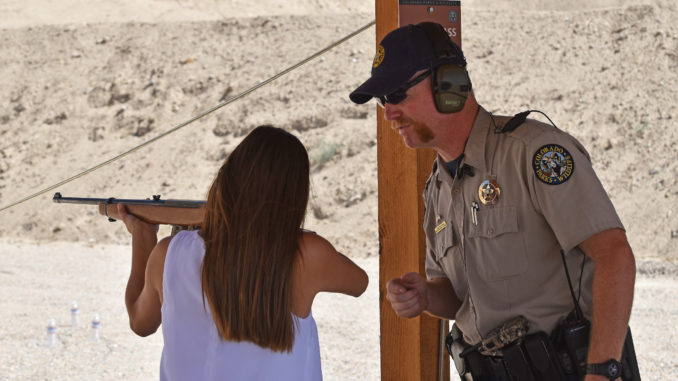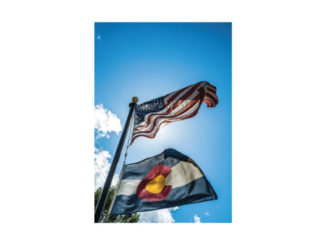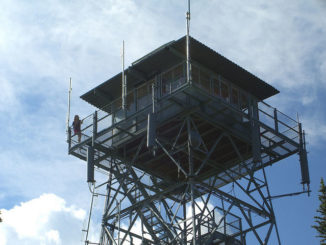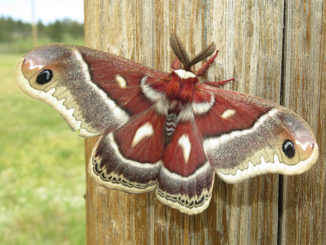

Theresa Rose
North Forty News
There can no doubt that the Fall season is the best time for the outdoors. The Fall foliage appears against a sky never so blue any other time of the year. There’s a chill in the air, so refreshing after the oppressive heat of the summer. Fewer people roam the trails since most of the tourists have gone home. The sounds of season, from the migrating birds to the bugling bull elk, to the gunfire in the distance…yes, gunfire. Fall is the season the hunter lives for and everyone shares the same parks. So how does this work, exactly?
The season runs from the end of August through November and the rules are strict in Colorado. Colorado law requires that anyone born on or after January 1, 1949, complete an approved hunter education course before applying for or buying a Colorado hunting license. These courses all include ethical hunting practices, such as laws in place that prohibit hunters from hunting right on roads. Hunters are taught to be able to identify exactly what they are shooting at and also what is behind their target. If they don’t know what is behind their target, they cannot take the shot. Colorado Parks and Wildlife Hunter Education Courses, led by certified volunteer hunter education instructors and/or CPW staff, are offered throughout the state year round.
Conflict between hikers and hunters is rare. According to Rebecca Farrell of the Information and Education branch of Colorado Parks and Wildlife, “All of the parks that offer hunting utilize all available tools, including their park brochures, trail signage, trail head/map signage to let everyone know the hunting season dates and types of hunting that can be expected at the park. This helps recreational users make good decisions about how to dress and when they might want to use different trails.”
Hunters don’t hunt on hiking trails. They will use the trails to get to and from their sites. Wildlife will usually avoid trails because of their innate fear of humans. Still, the rare interactions can run from unpleasant, such as crossing paths with a group of successful hunters transporting their kill to the parking lot with the antlered head in hand, to downright horrifying. In October of 2015 an incident occurred between a hunter and some wildlife watchers, who were in the same area when the hunter legally shot a moose. This occurred in the Brainard Lake Recreation Area in the Roosevelt National Forest near Ward, Colorado. For the wildlife watchers, the sight of an enormous bull moose crashing to it’s death in full view of their picnic table had to be traumatizing. A similar incident had been reported in 2014.
Jason Clay, the Public Information Officer for the northeast region of CPW, states that Colorado Parks and Wildlife is responsible for providing enjoyable and sustainable outdoor recreation opportunities and no one’s recreation is allotted more importance than another. Brainard Lake is known for it’s moose population and that population must be carefully maintained, which includes the need for hunters to help keep the population in check. Volunteers help educate the visitors on the importance of managing wildlife as well as how to safely recreate in moose country. This includes keeping dogs on leashes to prevent the dog from harassing the moose and having the moose chase the dog back to it’s owners.
There are other sources of potential conflicts on the trails themselves, such as between mountain bikers and horses. Bikers travel at high speeds and horses are easily spooked. According to Joyce Kelly, who organizes trail rides, 99.9% of the bikers are courteous and apologetic to the equestrians, who will routinely make room for the bikers to pass. She described two incidents in the last 20 years where one biker refused to slow down or to thank the horseback riders for clearing the trail and another who purposely slid and threw rocks at a father and daughter on horseback.
But back to hunters and hikers, there are ways for hikers to keep themselves and their dogs extra safe on the trails. Wear orange and outfit your dogs with bright colored clothing. Keep your dogs leashed, of course. Hewlett Gulch is an off-leash trail and hugely popular with dog owners, but hunters use the area also. Best to stick to the main trail during hunting season.
Support Northern Colorado Journalism
Show your support for North Forty News by helping us produce more content. It's a kind and simple gesture that will help us continue to bring more content to you.
BONUS - Donors get a link in their receipt to sign up for our once-per-week instant text messaging alert. Get your e-copy of North Forty News the moment it is released!
Click to Donate



